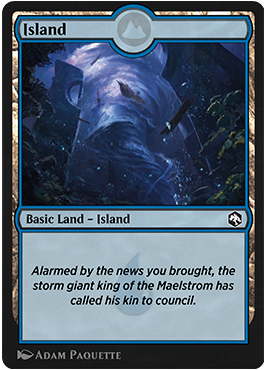[ad_1]
Dungeons & Dragons: Adventures in the Forgotten Realms brings the signature gameplay of Magic: The Gathering to an iconic Dungeons & Dragons setting. Prepare to embark on a legendary adventure through the continent of Faerûn as this landmark set makes its way onto Magic: The Gathering Arena.
Dungeons
There are three dungeons of the Forgotten Realms for you to brave, the sprawling Dungeon of the Mad Mage, the Lost Mine of Phandelver, and the lethal Tomb of Annihilation. To gain their rewards, you’ll need to use one of the many cards in this set that let you venture into the dungeon. You won’t need to bring the dungeon with you in deck building or find them in your collection; all three will always be available in game when you need a dungeon to venture into.
It’s always wise to gain as much information as possible on the dangers you’ll face in a dungeon before setting out from town. In MTG Arena you can see the full dungeon cards before you enter them by right-clicking any card that ventures into the dungeon. Right-click the card again to cycle the displayed dungeon. Note that you can use this to cycle through any tokens the card makes as well. On mobile devices, tap and hold a card that ventures into the dungeon to see all three dungeons.
All of this is available anywhere you see a card that ventures into the dungeon, whether you are in gameplay, building a deck, or drafting.

When you venture into the dungeon for the first time in a game, you choose one of the three dungeons and move into the first (top) room, triggering its ability. When making this choice in MTG Arena, you can mouse over or tap each dungeon to flip it over, revealing its rooms and abilities. Each dungeon will stay flipped, letting you compare the dungeons if you aren’t a veteran adventurer yet.

Once in a dungeon, when you venture into the dungeon again you will be prompted to choose the next room to enter. You’ll have to follow the arrows as you move from room to room—choose wisely!

Once you’ve entered the final (bottom) room in a dungeon and its ability leaves the stack, you’ll have completed the dungeon. The next time you venture, you’ll get to choose a new dungeon to enter.
If a player is in a dungeon, you’ll see it on the left side of the screen, next to their emblems and other game effects. You can mouse over or tap it to see which room they are in.

A few cards check to see if you’ve completed a dungeon, and in one case, a specific dungeon. Once you’ve escaped your first dungeon each game, your completed dungeons can be found in the dungeon hanger when looking at these cards.

Dice
You can’t play Dungeons & Dragons without dice. Adventures in the Forgotten Realms has plenty of cards that ask MTG Arena players to roll a d20. Each comes with a table so you can see all possible results.
Some cards (like the helpful Pixie Guide) will let you roll more than one die at a time, ignoring all but the highest roll, while The Deck of Many Things modifies your roll. Even when things really get out of hand, MTG Arena will roll all the needed dice without any falling off the board, showing the number that the results table will use.

Classes
Adventurers in Dungeons & Dragons have plenty of classes to choose from. Like your tabletop character, the Class enchantment cards in Adventures in the Forgotten Realms start at level 1 and unlock more abilities as they level up. You can have multiple Class cards on the battlefield at once—feel free to multiclass!
In MTG Arena, classes can be found on the right side of the battlefield with Sagas and planeswalkers. The abilities are grayed out until that Class card has reached the necessary level.

Flavor
The storytelling of Dungeons & Dragons is on display throughout the cards in this set. Flavor text appears on the basic lands, as do flavor words on many cards, setting the stage with dramatic locations, perilous choices, deadly monster abilities, classic spells, and more. While the flavor words aren’t rules text and don’t impact gameplay, that Black Dragon’s acid breath definitely will.




Treasure
Risk for reward, and the reward some of the cards in this set provide are Treasure tokens. MTG Arena players are already familiar with these tokens. What’s new in the Forgotten Realms is that some spells provide you a bonus when cast with mana from Treasure. For these spells, if you have Treasure available, Auto Tap will suggest a solution that includes it. You can always manually tap your lands to keep your Treasure in your pouch.

Bard Class

At level 2, Bard Class gives you a discount on some legendary spells. When casting a legendary spell with hybrid mana in its cost, MTG Arena will choose a cost that maximizes the discount from Bard Class. In rare scenarios, you might want to pay more; if that’s the case, enter full control before casting the spell to specify the exact cost you want to pay for hybrid costs. There are no hybrid costs in Adventures in the Forgotten Realms.
Cave of the Frost Dragon (and friends)

Cave of the Frost Dragon is part of a cycle of rare lands in this set that conceal monsters ready to attack. They also enter the battlefield tapped once you have two or more other lands on the battlefield. Like similar conditional lands, MTG Arena gives them a softer highlight if playing them would cause them to enter the battlefield tapped. Temple of the Dragon Queen also has this feature, visible when you can’t find a Dragon.
Sudden Insight

Like similar cards, Sudden Insight shows you a count equal to the number of cards you’ll probably draw if you decide to cast it.
Wish

Dungeons & Dragons players know Wish gives you plenty of options, especially when playing Sealed Deck. After casting this, MTG Arena will give you a single option next to your hand, and when the time is right, you can drag out that option to access a browser and pick the card you want to play from your sideboard. Remember that in Best-of-One Constructed formats you only have access to the first seven cards of your sideboard.
Xanathar, Guild Kingpin

When you can play the top card of your opponent’s library, you’ll see it next to the other cards in your hand (instead of on your opponent’s library) as a “near hand castable,” just like cards you can play from your graveyard or exile.
[ad_2]





